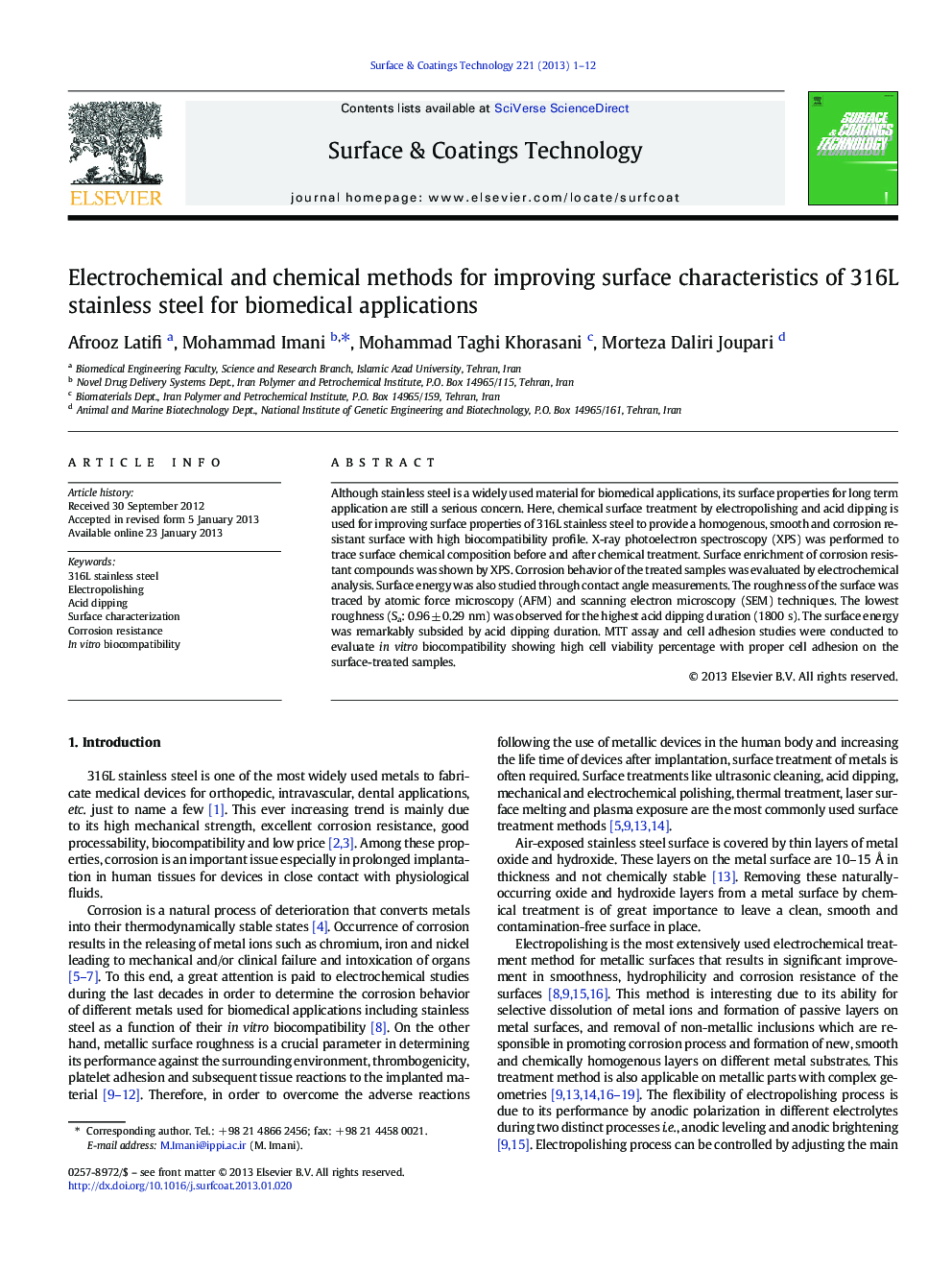| Article ID | Journal | Published Year | Pages | File Type |
|---|---|---|---|---|
| 1657960 | Surface and Coatings Technology | 2013 | 12 Pages |
Although stainless steel is a widely used material for biomedical applications, its surface properties for long term application are still a serious concern. Here, chemical surface treatment by electropolishing and acid dipping is used for improving surface properties of 316L stainless steel to provide a homogenous, smooth and corrosion resistant surface with high biocompatibility profile. X-ray photoelectron spectroscopy (XPS) was performed to trace surface chemical composition before and after chemical treatment. Surface enrichment of corrosion resistant compounds was shown by XPS. Corrosion behavior of the treated samples was evaluated by electrochemical analysis. Surface energy was also studied through contact angle measurements. The roughness of the surface was traced by atomic force microscopy (AFM) and scanning electron microscopy (SEM) techniques. The lowest roughness (Sa: 0.96 ± 0.29 nm) was observed for the highest acid dipping duration (1800 s). The surface energy was remarkably subsided by acid dipping duration. MTT assay and cell adhesion studies were conducted to evaluate in vitro biocompatibility showing high cell viability percentage with proper cell adhesion on the surface-treated samples.
► Stainless steel 316L surface was chemically treated by electropolishing and/or acid etching process. ► The surface roughness was significantly reduced by increasing in the duration of chemical treatment. ► Performance of the treated surfaces in corrosive media depends on the kind of treatment(s) received. ► Presence of water repellent compounds significantly changes the surface wettability. ► Good adhesion profile was observed for fibroblast cells on the surfaces with low wettability.
